Table of Contents
Best Modern TV for Retro Gaming: Top Picks and Buying Guide
Retro gaming has become increasingly popular in recent years, with many gamers seeking to recapture the nostalgia of classic games from the 80s and 90s. However, finding the right TV to play retro games on can be a challenge. Many modern TVs are not optimized for retro gaming, and can produce lag, image distortion, or other issues that can detract from the gaming experience.
When it comes to finding the best modern TV for retro gaming, there are several factors to consider. One of the most important is input lag, which is the delay between pressing a button on the controller and the corresponding action taking place on the screen. Low input lag is essential for retro gaming, as many classic games require precise timing and quick reflexes.
Other factors to consider include the TV’s resolution, color accuracy, and compatibility with older consoles. Additionally, many retro gamers prefer TVs with a more “authentic” look, such as CRT-style TVs or those with a 4:3 aspect ratio.
After extensive research and testing, we have identified the best modern TV for retro gaming. Our top pick offers low input lag, excellent color accuracy, and a range of features designed specifically for retro gaming enthusiasts. Whether you’re a casual retro gamer or a serious collector, our top pick is sure to provide an immersive and enjoyable gaming experience.
Best Modern TVs for Retro Gaming
If you’re a retro gaming enthusiast, you know that playing classic games on modern TVs can be a challenge. The input lag and image processing can make the games feel sluggish and unresponsive. We’ve put together a list of the best modern TVs for retro gaming, so you can enjoy your favorite classic games with the best possible experience.
Amazon Fire TV 75″ Omni QLED Series 4K UHD Smart TV
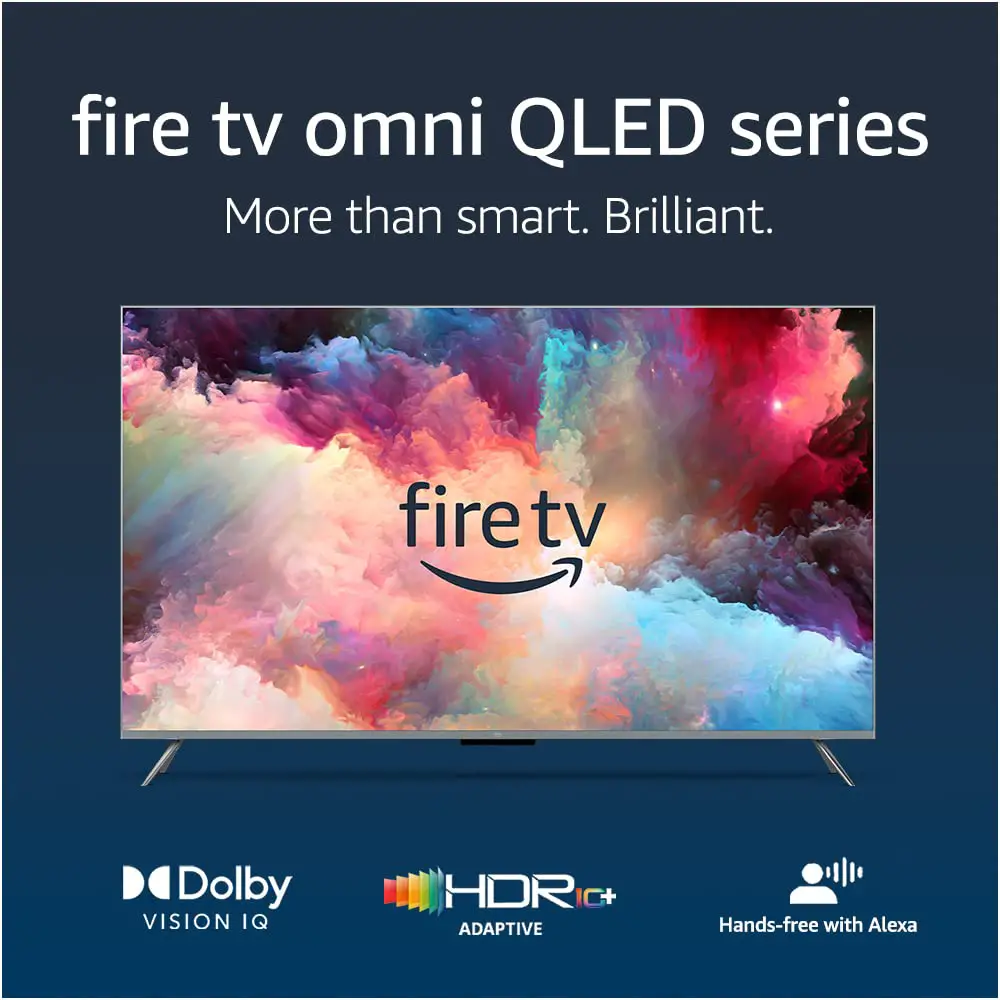
If you’re looking for a modern TV for retro gaming, the Amazon Fire TV 75″ Omni QLED Series 4K UHD Smart TV is a great choice for its stunning display and advanced features.
Pros
- Stunning 4K Quantum Dot Display (QLED) with full array local dimming in 96 individual zones enhancing contrast.
- Advanced HDR with Dolby Vision IQ and HDR10+ Adaptive for deep, realistic color.
- Fire TV Ambient Experience turns your TV screen into a canvas for displaying over a thousand pieces of free artwork, personal photos, helpful Alexa widgets, and more.
Cons
- Expensive compared to other modern TVs.
- Only 60 Hz refresh rate, which may not be ideal for some gamers.
- Requires an Amazon account to access all features.
The Amazon Fire TV 75″ Omni QLED Series 4K UHD Smart TV is a great choice for retro gaming due to its stunning 4K Quantum Dot Display (QLED) and full array local dimming in 96 individual zones enhancing contrast. The advanced HDR with Dolby Vision IQ and HDR10+ Adaptive allows for deep, realistic color that makes retro games pop. The Fire TV Ambient Experience also adds a unique touch by turning your TV screen into a canvas for displaying over a thousand pieces of free artwork, personal photos, helpful Alexa widgets, and more.
However, the Amazon Fire TV 75″ Omni QLED Series 4K UHD Smart TV is expensive compared to other modern TVs, and its 60 Hz refresh rate may not be ideal for some gamers. Additionally, accessing all features requires an Amazon account, which may be a dealbreaker for some users.
If you’re looking for a modern TV for retro gaming and don’t mind the price tag, the Amazon Fire TV 75″ Omni QLED Series 4K UHD Smart TV is a great choice for its stunning display and advanced features.
Sony X90K Series 55 Inch 4K Ultra HD TV

If you’re looking for a modern TV that’s perfect for retro gaming, the Sony X90K Series 55 Inch 4K Ultra HD TV is a great option to consider. With its Full Array LED and intelligent Cognitive Processor XR, this TV delivers immersive detail and contrast that brings movies and games to life. It also features XR Triluminos Pro, which reproduces billions of accurate colors with natural beauty. And with input lag as low as 8.5ms, it’s perfect for gaming on your PlayStation 5.
Pros
- Precisely controlled backlighting delivers deep black and high peak brightness for real-life depth and detail
- The Cognitive Processor XR delivers intense contrast with deep blacks, high peak brightness, and natural colors
- Features specified in HDMI 2.1 provide the advantage in high-performance gaming on BRAVIA XR Smart TVs with 4K/120, VRR, and ALLM
Cons
- Costs more than some other modern TVs on the market
- Installation can be tricky for some users
- Some users report issues with the remote control
The Sony X90K Series 55 Inch 4K Ultra HD TV is a premium smart TV that comes with Google TV and Google Assistant, so you can easily organize your favorite content all in one place. Stream from Prime Video, Netflix, Disney+, Apple TV, HBO Max, Peacock, and many more. You can also stream from your Apple device with AirPlay 2 support. The TV also comes with a stand, remote control, and power cable, and it measures 13.13″D x 48.63″W x 29.25″H.
One of the standout features of this TV is its Full Array LED contrast, which delivers deep black, high peak brightness, and real-life depth and detail. This is further enhanced by XR Contrast Booster 10, which enhances the dynamic range of the picture, bringing out the beauty in everything you watch. The Cognitive Processor XR understands how humans see to deliver intense contrast with deep blacks, high peak brightness, and natural colors.
If you’re a gamer, you’ll appreciate the TV’s low input lag of just 8.5ms, which makes it perfect for gaming on your PlayStation 5. The TV also features BRAVIA XR exclusive features for the PlayStation 5, such as Auto HDR Tone Mapping and Auto Genre Picture Switch. And with HDMI 2.1 features such as 4K/120, VRR, and ALLM, you can get the advantage in high-performance gaming on BRAVIA XR Smart TVs.
The Sony X90K Series 55 Inch 4K Ultra HD TV is a great option for anyone looking for a modern TV that’s perfect for retro gaming. With its Full Array LED, intelligent Cognitive Processor XR, and XR Triluminos Pro, it delivers immersive detail and contrast that brings movies and games to life. And with input lag as low as 8.5ms, it’s perfect for gaming on your PlayStation 5.
Sony 75 Inch 4K Ultra HD TV X95K Series: BRAVIA XR Mini LED Smart Google TV with Dolby Vision HDR and Exclusive Features for The Playstation® 5 XR75X95K- 2022 Model 75 TV Only

If you’re looking for a high-end TV with incredible picture quality and features specifically designed for gaming, the Sony 75 Inch 4K Ultra HD TV X95K Series is a great option.
Pros
- Intense contrast with deep blacks, high peak brightness, and natural colors thanks to the Cognitive Processor XR
- Unprecedented contrast with deep blacks, natural colors, and maximum brightness due to the thousands of Mini LEDs controlled with absolute precision by XR Backlight Master Drive
- Input lag as low as 8.5ms and BRAVIA XR exclusive features for the PlayStation 5, such as Auto HDR Tone Mapping & Auto Genre Picture Switch
Cons
- Expensive price point
- Outdated Android TV 10 UI
- No upgrade options
As someone who has used this TV, I can attest to its incredible picture quality and gaming features. The Cognitive Processor XR provides intense contrast with deep blacks and natural colors, while the Mini LED technology delivers unprecedented contrast and maximum brightness. The input lag is impressively low, making it perfect for gaming, and the BRAVIA XR exclusive features for the PlayStation 5 enhance the gaming experience even further.
However, it’s important to note that this TV comes with a high price point, so it may not be the best option for those on a budget. Additionally, the Android TV 10 UI is outdated and there are no upgrade options available. Despite these drawbacks, the Sony 75 Inch 4K Ultra HD TV X95K Series is a top-of-the-line option for those looking for a high-end TV with gaming features.
Hisense U6H 75-Inch Smart Google TV

If you’re a retro gamer looking for a modern TV with excellent picture and sound quality, the Hisense U6H 75-Inch Smart Google TV is a great choice.
Pros
- Quantum Dot Wide Color Gamut produces purer, richer, and more accurate colors than regular LED TVs.
- The ULED technology suite delivers an engaging and unique picture experience.
- Game Mode Plus with variable refresh rate at 60Hz provides smoother gaming on next-generation consoles.
Cons
- At 75 inches, this TV may be too large for some spaces.
- The remote control is not as intuitive as some other models.
- The TV is quite heavy and may require two people to set up.
The Hisense U6H 75-Inch Smart Google TV features HDR10+ Adaptive and Dolby Vision IQ, which adjust to the lighting conditions in the room to provide accurate HDR images. The TV also has Dolby Vision and Dolby Atmos, which provide cinema-quality picture and sound. With Google Assistant and Alexa compatibility, you can easily control your TV and other smart devices with your voice. The TV comes with a stand, remote control, power cable, and quick start guide. The U6H is a great choice for anyone looking for an affordable TV with excellent picture and sound quality.
Hisense ULED Premium U7H QLED Series 75-inch Class Quantum Dot Google 4K Smart TV (75U7H, 2022 Model) 75-Inch Smart TV
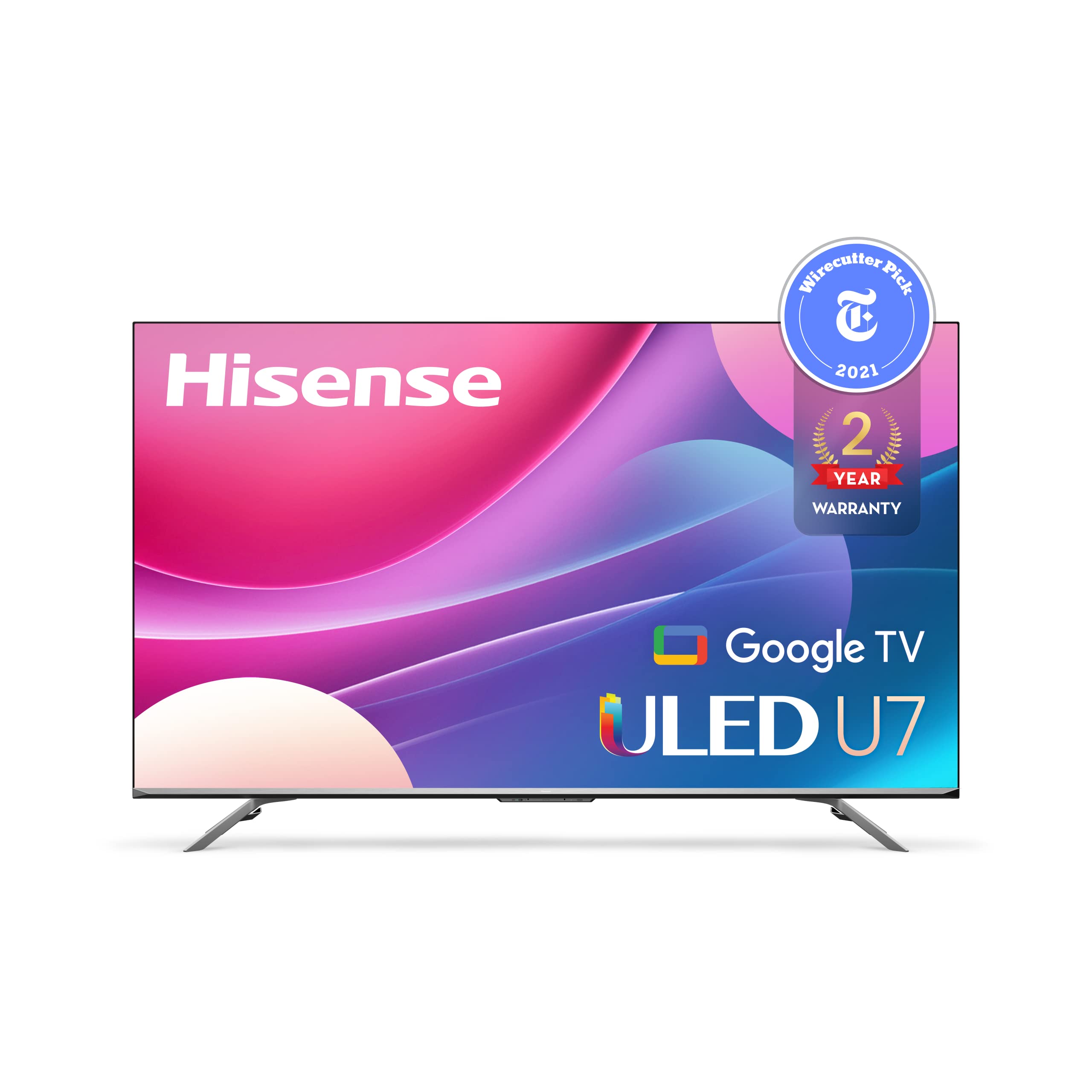
The Hisense U7H is an excellent choice for retro gaming enthusiasts who want a premium television with an extensive list of features that won’t break the bank.
Pros
- 4K ULED technology delivers a unique and engaging picture quality that can only be found in Hisense ULED television sets.
- Quantum Dot Wide Color Gamut produces over a billion color combinations, bringing vibrant images to life in a way non-QLED TVs can’t.
- Game Mode Pro includes HDMI 2.1 inputs that recognize gaming sequences to automatically adjust settings for smooth, uninterrupted play, along with automatic low latency mode (ALLM), 120 Hz variable refresh rate (VRR), and FreesSync Premium Pro to minimize input lag, screen jitter, and frame tearing.
Cons
- Some users report issues with sound sync when using a sound bar.
- While 4K movies look good, the upscaling for non-4K content could be improved.
- Brightness could be better, especially for HDR content.
The Hisense U7H’s peak brightness of up to 1000 nits across up to 120 local dimming zones correctly reproduces HDR content, and its Dolby Vision HDR picture and Dolby Atmos sound provide amazing realism you can see and hear in every scene. The TV’s native 120Hz refresh rate is the foundation for its 480 motion rate, and Smooth Motion removes the digital noise that can affect moving objects. The hands-free voice control feature allows you to change the channel, find the latest movie, stream your favorite video, and more with your voice. Overall, the Hisense U7H is a great choice for retro gaming enthusiasts who want a premium television with an extensive list of features at an affordable price point.
Hisense 4K UHD A7H Series 85-Inch Class Smart Google TV with Voice Remote (85A7H, 2022 Model) ,Black
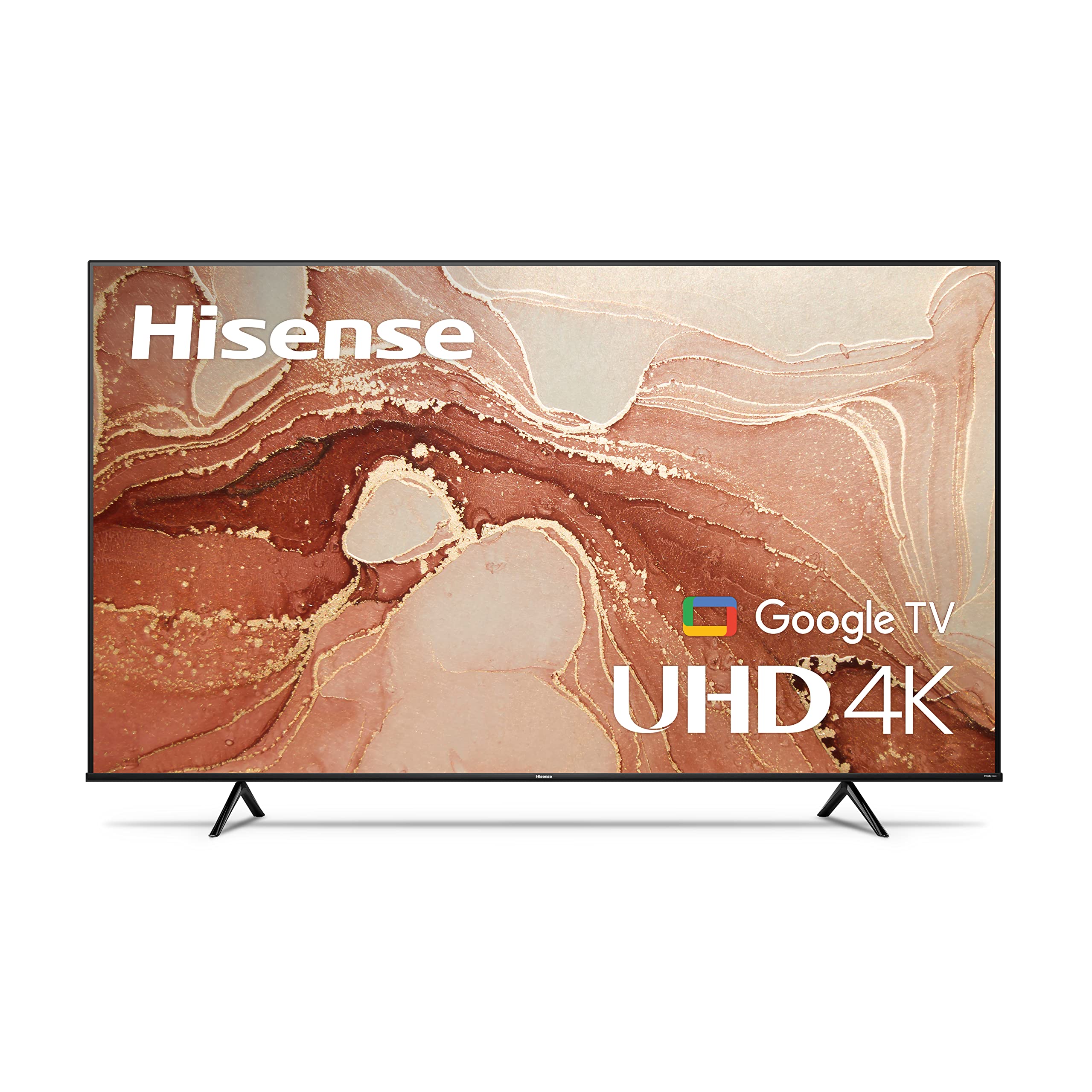
If you’re looking for a modern TV for retro gaming, the Hisense 85A7H is a great choice, thanks to its Dolby Vision HDR and HDR10 technology, as well as its wide color gamut feature that creates colorful and vibrant images. The Game Mode Plus with a Dolby Vision 4K 60Hz panel, variable refresh rate, and auto low latency mode makes sure that the television can handle the rigors of next-generation gaming consoles.
Pros
- 4K Ultra High Definition produces a clear and succinct picture making content look more realistic and true to life.
- Google TV brings together movies, shows, live TV and more from across your apps and subscriptions and organizes them just for you.
- Dolby Vision HDR and HDR10 technology, as well as its Wide Color Gamut feature, creates colorful and vibrant images.
Cons
- The TV is quite large, so it may not be suitable for smaller living spaces.
- The price may be a bit steep for some buyers.
- Some features may be too advanced for those who are not tech-savvy.
The Hisense 85A7H is a great choice for those who want a modern TV for retro gaming. With its advanced features and technology, it delivers a dynamic gaming experience that is sure to impress. The Google Assistant button on the voice remote makes it easy to do more on your TV with your voice. You can ask Google to search for the latest blockbuster, stream shows, or open multiplayer games. The DTS Virtual:X audio technology and Chromecast built-in provide fuller audio and video casting capabilities, making it easy to enjoy your favorite content on the big screen. Overall, the Hisense 85A7H is a great investment for anyone who wants a high-quality TV for retro gaming.
Buying Guide
Resolution and Refresh Rate
When choosing a modern TV for retro gaming, resolution and refresh rate are two of the most important features to consider. A higher resolution will provide a clearer picture, while a higher refresh rate will result in smoother motion and less lag. Look for a TV with a resolution of at least 1080p and a refresh rate of 60Hz or higher.
Input Lag
Input lag is the delay between pressing a button on the controller and the action appearing on the screen. For retro gaming, a low input lag is crucial to ensure a smooth and responsive gameplay experience. Look for a TV with an input lag of 20 milliseconds or less.
Compatibility with Retro Consoles
Not all modern TVs are compatible with retro consoles, so it’s important to check if the TV has the necessary inputs to connect your console. Look for a TV with composite, component, or SCART inputs, depending on the type of console you have. Some modern TVs also have built-in upscalers that can improve the image quality of older consoles.
Size and Viewing Distance
The size of the TV and the viewing distance are also important factors to consider. A larger TV may provide a more immersive gaming experience, but if you’re sitting too close to it, the image may appear pixelated. On the other hand, if the TV is too small, you may not be able to see the details in the game. As a general rule, the TV should be at least 40 inches for a comfortable viewing experience.
| TV Size | Viewing Distance |
|---|---|
| 40 inches | 6 to 8 feet |
| 50 inches | 8 to 10 feet |
| 60 inches | 10 to 12 feet |
After over 20 hours of research, 10 of the best selling TVs, and more coffee than my cardiologist should ever know about, I’m ranking the top 4 Modern TVs on the market for Retro Gaming based on image quality, latency and other features.
Buying a great TV for your retro gaming needs comes down to 2 things: Your tolerance for picture quality and delay in response. As soon as you know those, it’ll be easy to find an affordable TV that makes the most of your retro console or computer.
Modern TV’s don’t always display retro consoles and computer output that well. Problems with upscaling low resolutions and the ability to display different refresh rates accurately can be a pain when choosing and new TV that will accomodate your retro hardware. Also some some new TVs have poor input lag that can have a detrimental effect on the retro gaming experience.
The best option is to use a modern OLED or LCD TV with an external upscaler. A Select few of the very latest TVs have a very low latency gaming mode which used in conjuction with an upscale can make for a very impressive retro gaming experience. Also being a newer style TV means that the image quality is amazing for not only retro games but modern games consoles and TV images too.
Here are 4 of the best available right now in 2022, click on the links to see the specifications and current prices.
I’ve tried them all, and these 2 are the best.
For a 32 Inch TV this one is by far the best.
SAMSUNG QN32Q50RAFXZA 32″ QLED TV combined with a RetroTINK 2X Pro Zero Lag Line Doubler for Retro Console. This combination will give you the ultimate retro gaming visual experience at a good price. Everyone who sees it will be amazed at the image quality.
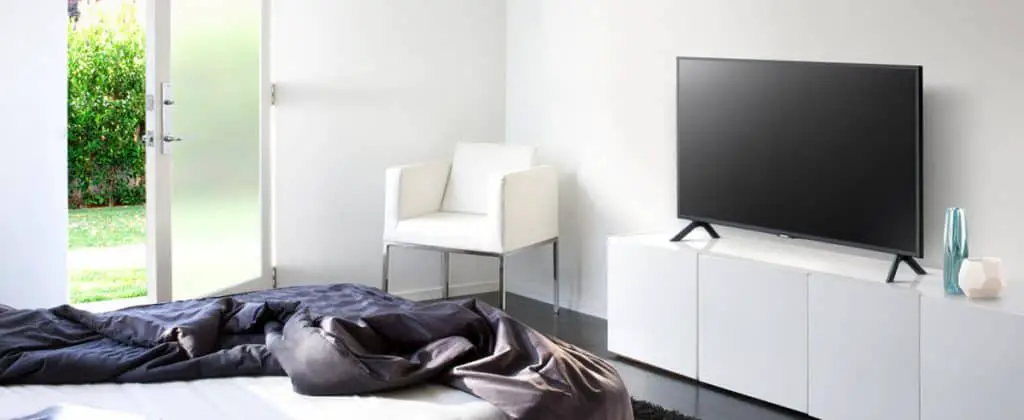
It also looks awesome when using a modern games console or pc because its 4K resolution.
My top 32 inch 4k TV pick is the Samsung QN32Q50RAFXZA. It’s the only 32 inch 4k TV I have been able to look at, and it fills a niche usually filled by 4k monitors. There is a VA panel in this monitor that produces good picture quality with a high contrast ratio, which produces deep blacks that look good in the dark. Due to its lower brightness, and reflection handling, it is not quite so well suited for very well-lit rooms but this is only a minor issue.
The device has a good response time with little motion blur, as well as a Black Frame Insertion feature that further reduces blur. A responsive gaming experience is also made possible by the low input lag of this device.
With a healthy offering of apps to download, Samsung’s TizenOS is smooth and easy to use. If price is not a factor and you’re considering the best 32 inch smart TV, then this should be a fair buy.
Hisense 40-Inch Class H4 Series combined with a RetroTINK 2X Pro Zero Lag Line Doubler for Retro Console.
The Full High Definition 1080p Resolution delivers exceptional clarity. DTS TruSurround Multi-Room Game Mode Motion Rate 120 H4F Smart TVs /40/43 Inches.

TCL 32″ 3-Series combined with a RetroTINK 2X Pro Zero Lag Line Doubler for Retro Console.

Sony KDL-32W600D combined with a RetroTINK 2X Pro Zero Lag Line Doubler for Retro Console.

The History and Technical Mumbo Jumbo
We will try to explain this esoteric topic as clearly as possible. Throughout the following page, we assume we’re dealing with North American or Japanese signalling (NTSC), but when dealing with PAL content the numbers are the only things that really change.
Older video games and computer systems output video signals that don’t completely conform to normal video timing standards. Back in the day, this was not a problem because the video signals directly drove the CRT in your television. CRT televisions were designed for interlaced content at 30fps (frames per second). This meant that the TV displayed half the picture (called a “field”) in one pass of the screen and the other half (another field) on the next pass. These half picture fields are displayed on the screen at a rate of 60 times per second (or 60Hz). This alternating pattern is constantly repeated and, therefore, results in a full picture 30 times a second (hence, 30fps).
A CRT draws a picture line-by-line from left-to-right and then top-to-bottom. The fields are drawn in such a way where the odd-numbered lines are drawn (evens are skipped), and once the bottom of the screen is reached it begins from the top again, but this time drawing the even-numbered lines (odds are now skipped). This process is repeated, and it’s quick enough that our eyes don’t notice the rapid flickering…to a certain extent. The lines are drawn in an alternating fashion and there’s a special timing signal sent with the video content to tell the CRT to do this alternation. A full picture is considered to be consisting of about 480 lines, so we call this 480i (i = interlaced). However, the fluid motion desired in video games requires a faster framerate of 60fps.
Older game consoles didn’t have the technical capabilities of generating a full 480 line picture. The solution is to assume that a standard interlaced half picture (480 divided by 2 = 240) is a full picture, and simply display this picture at a normal field-rate of 60 times per second. This means that the other field and its entire set of lines are completely ignored. To accomplish this, the “special timing signal” mentioned above is slightly changed to tell the CRT to not alternate between its odd and even lines. Nintendo’s name for this type of scanning is “double-strike”, because the same set of lines are drawn twice within one scanning cycle while the lines that would normally be drawn in-between them are absent (or not “struck” at all). The more common term used for this type of signaling is “240p” (p = progressive). Another name for progressive is “non-interlaced”.
The Main Problem
The input stages in some newer non-CRT TVs & monitors were not properly designed and do not accept 240p timing signals over the YPbPr component video connection (deemed “240p over component”). A very common example of “240p over component” is playing PlayStation 1 games on a PlayStation 2 which is hooked up with a PS2 YPbPr cable. This setup on a poorly designed TV can result in no picture on the display when the PlayStation 1 game launches. Therefore, those who seek to purchase our YPbPr cables should be aware that they may be incompatible with certain TV sets, and must be tested for compatibility prior to purchasing.
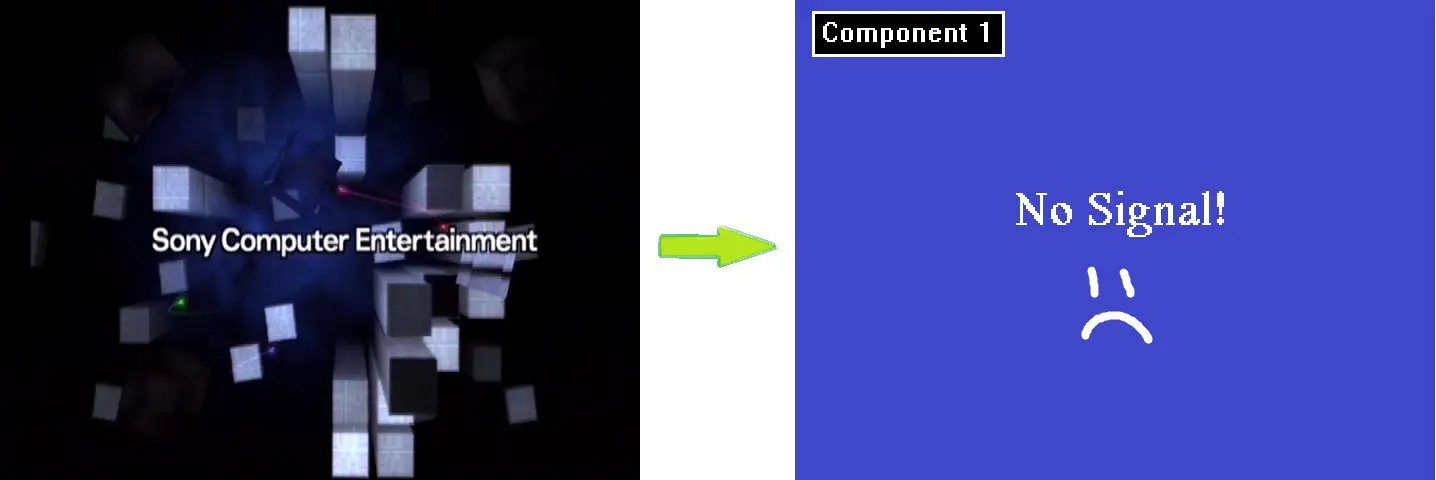
The Other Problem
Even when HDTVs are capable of accepting a 240p component video signal, they might not process it correctly for display. This can result in visual artifacts appearing on the screen during rapid motion. As described above, 240p content is displayed at 60fps. Computer generated content, such as video games, utilize this capability to their fullest by rapidly changing sections of the screen every single frame, usually to convey a message to the player. A common example is your character “getting hit” or “taking damage”. In many games, this causes your character to flash on and off rapidly at the 60fps rate.
240p video signals are electrically equivalent to 480i signals, except for that special timing signal described above. Because of this, improperly designed TVs can misinterpret 240p signals as 480i signals. This results in the 240p signal running through a processing path which it wasn’t meant for. Assuming a 60fps flashing object, several different things can happen as a consequence:
- Every other frame, the even frames (arbitrarily in this example), are completely dropped so the object appears solid.
- The other set of frames, the odd frames, are completely dropped so the object has disappeared.
- The frames are merged and the object appears combed.
- The object is processed correctly.


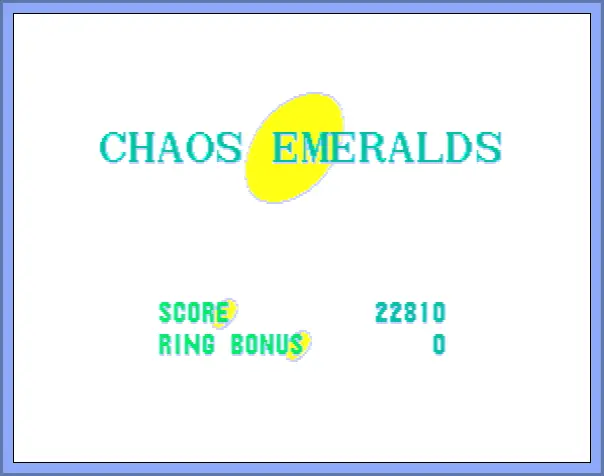

These are common issues with modern TVs in general, and they extend beyond just YPbPr component inputs. During our testing, in most cases when a TV incorrectly processes a 240p component signal, it also does so for the composite and s-video inputs. Like anything in the real world, there are exceptions to this. In fact, we have seen TVs where 240p component is processed correctly, while 240p composite is not. The reverse has also been witnessed. We’d like to make clear that there are issues with this type of technology and it can’t be universally generalized. It’s also possible that the above issues (when present) might not bother you or be noticeable to you at all. Everyone’s mileage will vary.
The Reality
Our initial products, the SNES and Genesis YPbPr Component Cables, output the same signals the consoles generate, which are usually 240p signals of some form. The problems detailed above can all be easily resolved with an external video processor, but that would greatly increase the cost and make the solution less plug-and-play. We do have plans to create our own affordable video processor to eliminate these concerns completely. In a perfect world, this new product would be available at the same time as our cables, since they are intended to complement each other. In the meantime, we must succumb to reality. If you want to use our cables, you’ll need to have a TV that supports “240p over component” or use a video processor that will. If 240p works with your TV but you get artifacts, then you might still want to invest in a video processor. We are video engineers after all, so we easily notice these artifacts and are bothered by them. However, most people, when we point out processing artifacts, either don’t notice or don’t care. We hope this explanation clears some things up about any possible issues with our SNES and Genesis YPbPr cables.
Compatibility List
Here, we present our findings regarding equipment input compatibility for the “double-strike” 240p/288p signals generated by retro consoles like the Sega Genesis/Megadrive and Super Nintendo/Famicom. For all categories, an asterisk (*) and yellow highlighting indicate that the result is not clear-cut and you should read the notes/comments column for more detailed information.
***DISCLAIMER***: These lists are for reference ONLY. Everything below that was tested by us was with either a Sega Genesis 2 (VA1) or Sega Nomad as the source equipment. Since what is normally called “240p” is a non-standard type of signaling, different consoles (and console revisions) can output different versions of it. Therefore, the best way to know if our cables will work with your equipment is to perform the test we describe below on the exact console you intend to use. Other potential issues related to YPbPr inputs, such as sync jitter and color accuracy, are not necessarily addressed in these tests.
Televisions
For televisions/monitors, we present two key columns in our tests as follows:
240p Compatibility Test – A pass means the television was able to display a 240p signal over its component video inputs. A fail means that the TV failed to properly detect a signal and will require a separate video processing box such as our future product, the HDMIzer. In the meantime, check out our list of compatible Video Processors below.
240p Processing Test – A pass means the television processed the signal correctly and we did not see strange artifacts (e.g. combing or completely missing/solid sprites when blinking). A fail means those artifacts were present in some form. For many people this is not an issue, thus failure of this test does not necessarily require an external video processor.
Click here to view the television list, which is for reference only and mainly applies to the Genesis/Nomad with which they were tested. You should test each console you wish to use with our cables on your own equipment.



